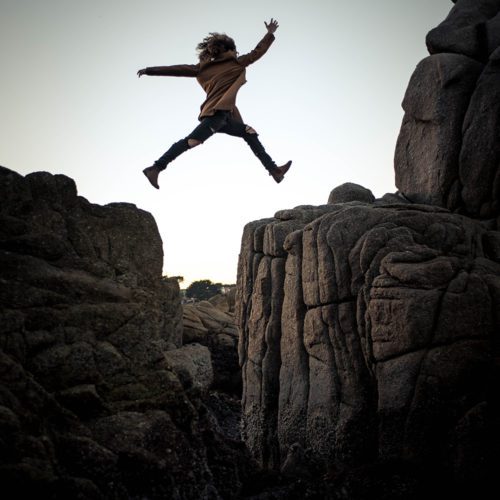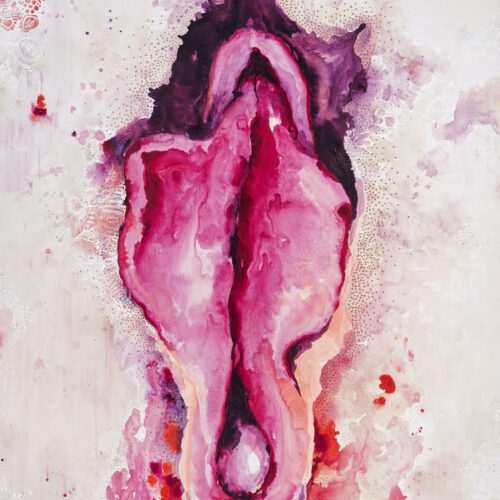 There is a line from one of my favorite movies that never fails to stop me in my tracks. It reminds me of our primal need to be seen…to be witnessed in our lives.
There is a line from one of my favorite movies that never fails to stop me in my tracks. It reminds me of our primal need to be seen…to be witnessed in our lives.
Susan Sarandon portrays the wife of the main character played by Richard Gere. In this scene, she is meeting with a private detective whom she hired to spy on her husband because she suspected he was having an affair. As it turns out, he was discovering a love of ballroom dancing and was too ashamed to admit that it filled a void in his otherwise perfect life. Upon learning this, she asks the private detective, “Why is it that we get married?” Quickly and with much conviction, he answers, “Passion.” “No”, she says, “Because we need a witness to our lives. When we get married, you are saying ‘your life will not go unnoticed because I will notice it. Your life will not go unwitnessed, because I will be your witness’.” She ends by saying, “feel free to quote me on this,” so I am.
It’s so true. As much as we preach and practice independence and self-reliance in our culture, there is – and will always be – a profoundly deep need to be seen and to be witnessed in our fiber. It’s part of our humanness – like it or not. It just is.
And if you really think about it…it’s everywhere. The need presents itself at a very young age. We begin as infants: “peek-a-boo….I see you!” We teach our children not to stare, but they are most likely doing so without judgment…it is our judgment that we are most aware of. They are simply witnessing the world in all its many shades and forms. Children don’t avert their eyes, and adults do, causing us to miss the chance to see something important. Something worth seeing. As a parent of two small children, I get how they have an insatiable need to be seen – to be witnessed – as they grow, try new things and master their universe. Earlier this summer, I smiled as my six-year-old yelled (again and again for hours…), “Mommy, watch this!” as he demonstrated various tricks and new skills in the water. My own mother smiled in recognition…apparently I did the same to her. In yet another tactic to be seen, my two-year-old literally placed his hands on either side of my face and steered my attention toward him to divert my eyes away from my ever-present Blackberry. “Right”, I thought, “I am here, seeing you.”
In his work with organizations and systems, Peter Senge, illustrates the power of this primal need with a story about the tribes of northern Natal in South Africa. There is a common greeting that exists among those tribes, much like our greeting of “hello” in English: Sawu bona. It literally means, “I see you.” If you are a member of the tribe, you might reply by saying Sikhona, “I am here.” Senge goes on to say that the order of the exchange is important: “until you see me, I do not exist. It’s as if when you see me, you bring me into existence.”
In her book Eat Pray Love, Elizabeth Gilbert writes of her experience in Bali, a culture that is firmly rooted and oriented in community. She writes of her somewhat shocked and slightly off-put reaction to the Balinese standard greeting, which is a series of three questions: Where are you coming from? Where are you going? And are you married? These questions taken at face-value seem rather intrusive in the context of our western culture. But to the Balinese, she writes, they are simply “trying to get an orientation on you, trying to insert you into the grid for the purposes of security and comfort.” Once these questions are satisfied, you exist in their world. You are seen.
I’ve been thinking a lot about this basic human need as it relates to our western culture. How does this play out in our society on a daily basis? How does this need get met today? Or does it? And what happens if it doesn’t get met? What then?
As a working mother and as a woman who works primarily with women and their organizations as a coach and a consultant, I see women witness each other on a regular basis. We do it well. It’s our gift. Kelly Corrigan writes beautifully about this gift in her piece “Transcendence: Words on Women and Strength” (found at the end of her book The Middle Place). “We will confide in each other about feeling anxious or angry or uninteresting or how many pieces of Halloween candy we accidentally ate from our kids’ bags. We’ll confess that we text while driving or that we should be having more sex or that we yell at our kids every day. We’ll admit that we believe in God, Jesus Christ, Heaven and Hell, or that we don’t…” Corrigan touches upon our natural abilities as women to witness, and about how “all this celebrating and sharing and confessing will make certain essential comforts possible…we will rally around and hold each other up…we will cry, as we howl, as we clutch as we circle… we will transcend, ladies, because we did all this…” In a similar vein, I wrote in an earlier blog post about the need we have as women to be reminded we are not alone, we are not crazy and we are understood. It’s a validation of sorts. You exist because I see you and what’s more, I get you. Ah, sweet relief at those words!
Then there is the acclaimed organizational model of Alcoholics (substitute another addiction here) Anonymous that has so consistently demonstrated the remarkable healing power in being seen. Individuals at meetings introduce themselves by their name and then identify themselves by their addiction, “I’m X, and I’m an alcoholic”. The group then responds in unison, “Hi, X”. Simple, but powerful. We see you. You are here. Welcome. There is no hiding in this context, and there is an implicit invitation to claim responsibility for who you are. Scary as it may be – a leap of faith to most – there is a refreshing honesty tothis truth-telling community that has applications well beyond healing our addictions, I suspect.
Most recently, I’ve been fascinated by the proliferation of Facebook and Twitter and how, essentially, these electronic networking sites and their “status updates” enable us to witness and be witnessed – virtually or otherwise – by others. When someone responds to a status update or a photo, they are essentially saying, “I see you…you are not going unnoticed.” Having recently embraced both of these virtual networks, I now understand its power. It feels good – sometimes in a self-conscious sort of way – but good nevertheless. Like an itch has been scratched. My own experience with Facebook, in particular, is that it has served on countless occasions to remind me I am not alone. My life has not gone unnoticed as of late, to an increasingly wider web in my community of “friends.”
And yet there continues to be this air of disdain or shame associated with this practice of witnessing. Some refer to Facebook as a “guilty pleasure” and are embarrassed to admit how frequently they check it. Why is that? I was reading a briefing from The Week on Twitter recently and it began by framing the piece with “Thanks to Twitter, millions of people are obsessively updating ‘friends’ on their most mundane activities.” The author likens Twitter to be the “watercooler of the 21st century”, as a means to suggest how it contributes to productivity losses. The piece also claims, “many [of its critics] see Twitter as the latest example of the self-indulgent, 24/7 exhibitionism…” Well, maybe, but aren’t all of those terms (“mundane”, “obsessive”, “self-indulgent”) relative? What is “mundane” to one person, might be inspiring or may resonate deeply with someone else.
And isn’t the proverbial watercooler where it’s at these days? Look at Obama’s campaign. He built his entire campaign on the belief that “Yes, We Can”, banking on the power of people to voice their opinions and demand change. James Suroweicki coined the phrase “wisdom of the crowd” to refer to the universal knowing that can be revealed through the collective consciousness – it’s what powers sites like Google and Wikipedia. Twitter, as a business application, has been credited as offering “the fastest, most honest research any computer ever heard – and it doesn’t cost a cent” (The Week 5.1.09). So it seems, the water cooler isn’t simply a waste of time…it’s a source of wisdom and truth.
What scares me is how we are so very skilled as a society at making invisible or marginalizing people, organizations, differences, by simply choosing as a society not to see something. And by not seeing it, we deem it non-existent. Remember the Holocaust? And there are a number of more modern day examples…Homelessness, domestic violence, mental illness, war. We even can make invisible the good stuff: optimism, kindness, the very young, the very old, our teachers, our mothers. In our haste or our ignorance or our habits, we have forgotten or fallen out of the practice of witnessing each other.
But here’s the thing… I think we’re remembering. Whether we realize it or not, I believe we are returning to a way of being that is very ancient and familiar to us – a simpler way of being. I have to hope that we are learning, once again, the art of simply seeing. Of being a witness to each other’s lives and insisting: your life will not go unnoticed. I will be your witness. The Global Oneness Project sums it up the best: “this ‘seeing’ is essential to our freedom.”




